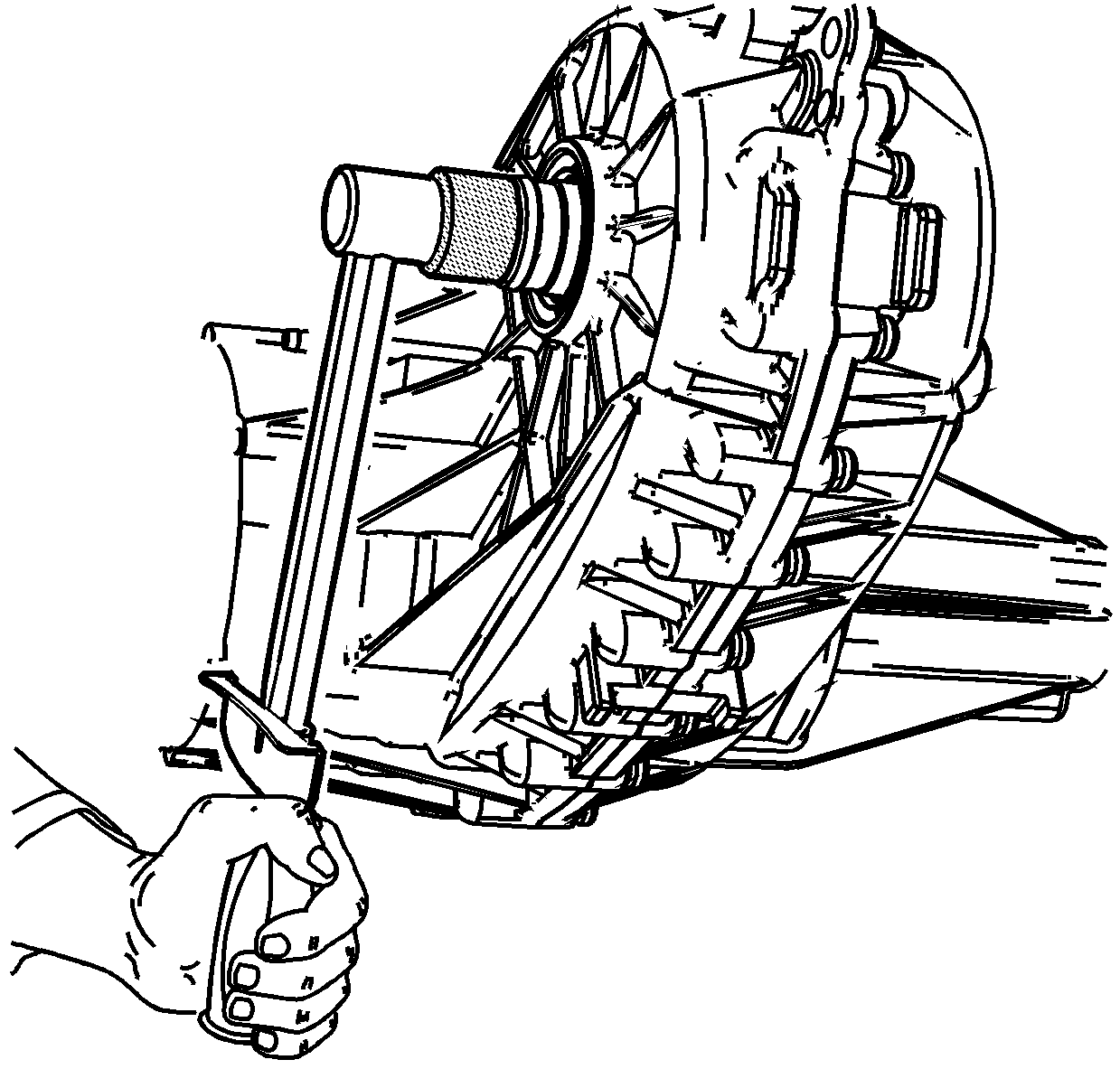Tools Required
J 45382 Transfer Case Tester

Important:
• Do not operate the vehicle on a hoist to diagnose the driveline components. Operating the vehicle on a hoist can cause over-spinning of the planetary pinion gears. • Testing the viscous coupling operation by removing a propeller shaft and driving the vehicle causes the viscous coupling to fail.
To determine if the viscous coupling is operating correctly, use the following test procedure. The test determines if the viscous coupling is faulty from a totally locked up failure, or if the viscous coupling fluid has leaked out from being severely humped.
- Operate the vehicle for 24 km (15 mi), or until normal operating temperatures are reached.
- Set the parking brakes for the rear wheels.
- Position the transmission in NEUTRAL.
- Raise the vehicle. Refer to Lifting and Jacking the Vehicle .
- Remove the front propeller shaft. Refer to Front Propeller Shaft Replacement .
- Install the J 45382 into the transfer case front output shaft.
- Using a torque wrench at 11 N·m (100 lb in) on the J 45382 , turn the front output shaft 90 degrees.
- Note the length of time it takes to turn the front output shaft the 90 degrees.
Important: The Viscous Coupling Test is very sensitive to the temperature of the transfer case. If the transfer case is very hot, the time to turn will be faster. If the transfer case is cold, the time to turn will be slower.
| • | If the front output shaft turns slow, and takes at least 10 seconds, the viscous coupling is operating correctly. |
| • | If the front output shaft will not turn, the viscous coupling or the planetary carrier assembly could be locked-up. |
| • | If the front output shaft turns easily, and the 11 N·m (100 lb in) cannot be obtained, the viscous coupling is faulty. |
